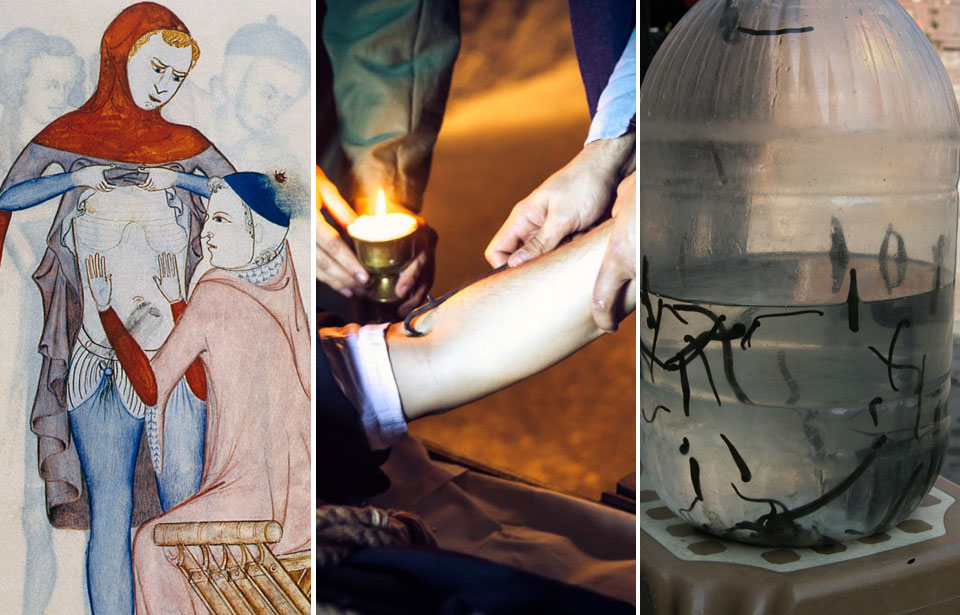Healthcare is an area that is constantly expanding, improving, and reinventing itself in light of new information. However, some of the cures and medicines used in the past could be as deadly as the disease itself!
Ancient remedies
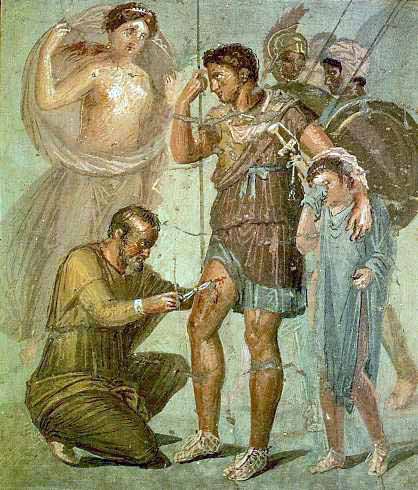
In Ancient Rome, Pliny the Elder recommended treating rabies by covering the bite with raw veal while the patient ate only lime and hog’s fat, accompanied by a concoction of wine and boiled badger dung.
On the more cosmetic side, the Romans would use urine as a teeth-whitener. After a while, urine starts producing ammonia, an antibacterial and bleaching agent, so perhaps this treatment was not as ridiculous as it sounds (although it was likely just as disgusting).
To cure malaria, third-century physicians would advise the patient to write “Abracadabra” repeatedly on a piece of paper with one less letter on each line. The paper should be worn around the neck for nine days before being thrown into a stream running east.
When a Celt was injured, they would get the wound licked by a dog. This treatment is not as daft as it sounds since research has shown that a dog’s saliva contains an enzyme that breaks down the cell walls of harmful bacteria.
Advice from medical books

Throughout the years, various texts have sought to guide physicians on the different treatments available for common complaints.
Bald’s Leechbook from the 10th century suggests periwinkle flowers and honey be applied to the eyes to cure cataracts. Swollen eyes could be treated by cutting off the eyes of a live crab and applying them to the patient’s neck.
John Wesley was a British Evangelist in the late 1740s who wrote Primitive Physick, or, An Easy and Natural Method of Curing Most Diseases. For asthma, he advised patients to eat only boiled carrots for a fortnight. For heart palpitations, the sufferer should drink cold water, place a rag dipped in vinegar over the chest, and then be electrified.
Those suffering from nosebleeds had a choice of treatments: hold a red-hot poker or vinegar-soaked rag under your nose or be bled.
Dr. Thomas Jefferson Ritter’s book Mother’s Remedies: Over One Thousand Tried and Tested Remedies from Mothers of the United States and Canada was published in 1910. Along with recommending cocaine for hay fever (more on that below), the book had a less toxic remedy for chapped hands. Sour cream would be placed in a cloth, buried overnight, then applied the next day.
For ringworm, Ritter suggested that gunpowder and vinegar should be mixed into a paste then applied to the infected area.
Cocaine for hay fever and more
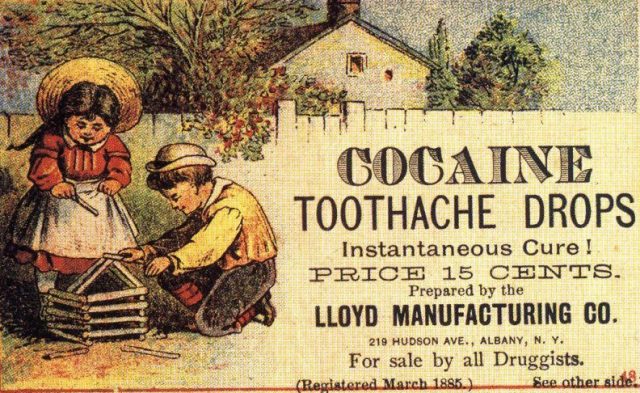
Although it’s a banned substance in many countries today, cocaine was once widely available. In the 1880s, it was used in eye surgery after it was discovered that a few drops could render the cornea immobile and result in less pain and blood during operations.
However, it was soon applied to other medical uses. Marketed as a drug that could treat toothache, depression, sinusitis, lethargy, alcoholism, and impotence, the substance could be bought as a tonic, lozenge, or powder.
Cocaine was a particularly popular remedy for coughs, hay fever, catarrh, and other throat troubles. It was even used to combat nervousness, headaches, and sleeplessness. At 50 cents per box, it was quite affordable.
By 1902, there were around 200,000 cocaine addicts in the US. The drug was eventually banned in 1914 by the Harrison Narcotic Act.
Heroin was marketed to children
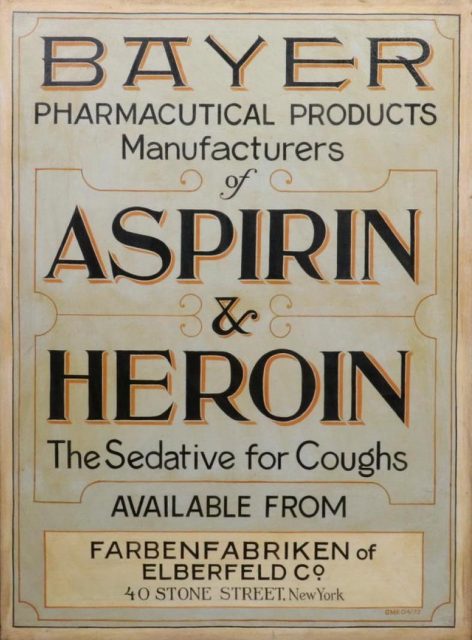
In the 1880s, heroin was marketed as a substitute for morphine. Sellers claimed it was five times more effective and much less addictive, even though it turned out to be around two times more addictive.
A highly popular product in 1898 was heroin-laced aspirin for children with sore throats, coughs, and colds.
Eventually, the side effects and addictiveness of this drug became apparent, and it was banned by the FDA in 1924.
Deadly drugs
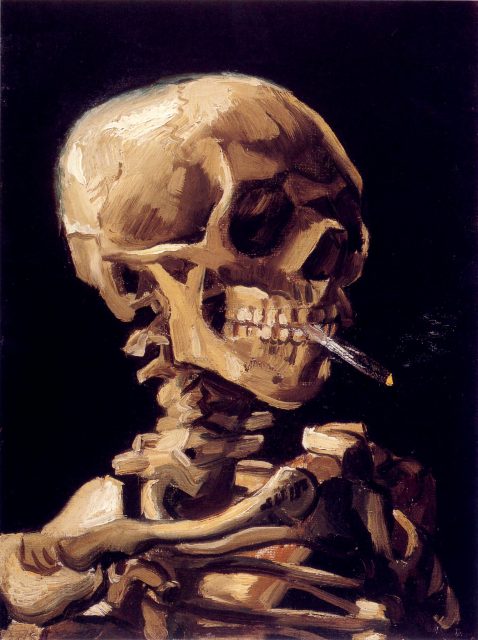
While heroin and cocaine could result in the user becoming addicted, other medicines could result in a patient’s death.
A popular cure for asthma during the 19th and 20th centuries was to encourage patients to smoke. As well as being an extremely ill-advised treatment, cigarettes at that time often included belladonna and stramonium as well as tobacco.
Chloroform was another recommended treatment for asthma, suggesting that, perhaps, people would have been better off sticking to two weeks of carrots – just as ineffective and yet massively less harmful.
Mercury was used to treat syphilis, constipation, and influenza for centuries. Even when physicians were aware of mercury poisoning, they simply lowered the dose used.
At the beginning of the 20th century, malariotherapy was used to treat syphilis. Sufferers were deliberately infected with malaria, and the subsequent fever would kill the temperature-sensitive syphilis bacteria. Around 15% of patients died from malaria, but those who survived could show significant improvement.
Radium was once considered a cure for arthritis, impotence, and aging. It was also included in energy drinks.
In his 1910 book, Dr. Ritter suggested “nux vomica” be given in a teaspoonful of water to relieve headaches. Today, we would refer to this chemical as strychnine, a poison often used to kill rats.
From trepanning to lobotomies

As far back as 7,000 years ago, people were having holes bored into their skulls in a procedure known as trepanning. Some researchers suggest that this was a cure intended to release the evil spirits believed to cause mental illnesses. Others put forward the theory that it might have been used to treat epilepsy, headaches, abscesses, and blood clots. Amazingly, skeletal evidence suggests some patients survived.
In the 20th century, lobotomies became a popular treatment for those who had a mental illness. Walter Freeman developed his “prefrontal lobotomy” procedure, which involved drilling into skulls or hammering an ice-pick-thin instrument through the eye sockets. His aim was to sever the connection between the frontal lobes and the thalamus because he believed these were responsible for a person’s emotions; severing them would make a patient calmer.
His first procedure on a live subject in 1936 was a success, although many later ones were not. The death rate attached to this procedure was about 15%, and those who survived were often left in a vegetative state.
Despite these statistics, lobotomies became popular, possibly because subdued patients were easier to deal with. At the treatment’s peak in 1949, 5,074 lobotomies were carried out in the USA. Nearly 60% of patients were women.
While we might gasp at these cures and medical procedures from the past, we should ask ourselves: which modern-day drugs and treatments will seem just as ridiculous or shocking to future generations?
